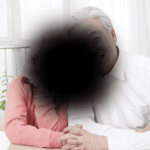Hiperopia juga dikenal sebagai rabun jauh. Ini adalah jenis kelainan refraksi umum yang terjadi saat cahaya difokuskan di belakang retina mata. Hiperopia lebih memengaruhi penglihatan dekat, yang berarti objek yang jauh dapat terlihat lebih jelas daripada objek dekat.
Ada kemungkinan bahwa kombinasi kelainan refraksi dapat terjadi secara bersamaan. Misalnya, hiperopia dan astigmatisme dapat terjadi pada mata yang sama, atau satu mata dapat rabun dekat sementara yang lain rabun jauh. Hiperopia (rabun dekat dalam bahasa Melayu) tidak boleh disamakan dengan presbiopia (rabun tua dalam bahasa Melayu), karena keduanya tidak sama. Presbiopia berkaitan dengan usia dan terjadi saat perubahan pada mata membuatnya kurang mampu berakomodasi, sehingga mengakibatkan kemampuannya untuk fokus pada cetakan atau objek jarak dekat. Hiperopia dapat terjadi pada usia berapa pun, sedangkan presbiopia biasanya terjadi di atas usia 40 tahun.
Gejala Hiperopia/Rabun Jauh
- Kesulitan melihat objek jarak dekat
- Mata tegang atau mata lelah
- Sakit kepala, terutama saat melakukan tugas jarak dekat
- Penglihatan kabur
- Menyipitkan mata
- Kelelahan
Gejala-gejala ini cenderung lebih jelas setelah melakukan pekerjaan jarak dekat seperti membaca, menggunakan komputer, menggunakan ponsel, dan sebagainya. Gejalanya dapat bervariasi, tergantung pada resepnya. Bagi orang dengan rabun jauh ringan, gejalanya mungkin tidak begitu kentara. Pemeriksaan mata secara teratur penting dilakukan untuk memastikan penglihatan Anda optimal. Orang dengan hiperopia sedang atau berat mungkin menyadari penglihatan mereka kabur untuk objek jarak dekat dan jauh.
Penyebab Hiperopia
Hiperopia terjadi ketika gambar difokuskan di belakang retina. Dari sudut pandang anatomi, hal ini terlihat pada mata yang lebih pendek. Kornea juga berperan besar. Jika kornea terlalu datar atau kurang melengkung dari biasanya, hal itu juga dapat menyebabkan gambar jatuh di belakang retina.
Ada komponen genetik yang terlibat dengan hiperopia, jadi sebagian besar individu hiperopia terlahir dengan kelebihan komponen tersebut. Penelitian menunjukkan bahwa kesalahan refraksi terutama dipengaruhi oleh banyak gen, jadi jika anggota keluarga langsung, seperti orang tua atau saudara kandung hiperopia, ada kemungkinan lebih besar untuk mengalami hiperopia. Faktor eksternal seperti gaya hidup dan pola makan juga dapat memengaruhi perubahan.
Perlakuan
Pada individu muda, pengobatan mungkin tidak diperlukan karena lensa alami di mata cukup fleksibel untuk mengakomodasi dan mengompensasi derajat hiperopia ringan hingga sedang. Penanganan umum untuk individu hiperopia adalah dengan kacamata atau lensa kontak.
- Kacamata – Ini adalah cara paling langsung, sederhana, dan aman untuk memperbaiki penglihatan yang disebabkan oleh hiperopia. Ada berbagai jenis lensa, seperti lensa untuk penglihatan tunggal, lensa bifokal, dan lensa multifokal progresif.
- Lensa kontak – Lensa bening lembut dikenakan pada mata. Lensa ini tersedia dalam berbagai bahan dan desain, seperti lensa lunak dan lensa Rigid Gas Permeable (RGP). Lensa ini tersedia dalam desain monofokal atau multifokal. Ada juga lensa kontak yang mengoreksi hiperopia dan astigmatisme.
Bagi individu yang lebih suka tidak memakai kacamata dan tidak bergantung pada kacamata atau lensa kontak:
Lensa ortokeratologi (Ortho-K):
Ortho-K adalah pemasangan lensa gas permeabel kaku (RGP) yang disesuaikan dan dikenakan semalaman. Saat seseorang tidur dengan lensa RGP, lensa akan dengan lembut membentuk kembali permukaan depan mata yang dikenal sebagai kornea. Penglihatan yang jelas dapat dicapai keesokan harinya setelah lensa dilepas. Lensa ortho-K hanya dapat mengoreksi hiperopia derajat rendah.
Pertukaran Lensa Refraktif (operasi katarak):
Prosedur ini melibatkan pengangkatan lensa alami di mata dan penanaman lensa buatan yang mengoreksi hiperopia. Prosedur ini biasanya berlaku untuk individu yang berusia di atas 40 tahun, sekitar waktu ketika katarak dapat mulai berkembang dan presbiopia terjadi. Setelah pertukaran lensa refraktif, individu tidak akan memerlukan operasi katarak di masa mendatang.
Bedah Refraktif Laser
Bedah laser dilakukan dengan membentuk kembali kelengkungan kornea menggunakan mesin laser berenergi rendah. Ini adalah pilihan yang baik bagi pasien dengan hiperopia termasuk PRK, TransPRK, dan LASIK. TransPRK adalah perawatan ‘LASIK’ tanpa sentuhan dan pisau bedah yang mampu mengobati hiperopia hingga +6,00D.







